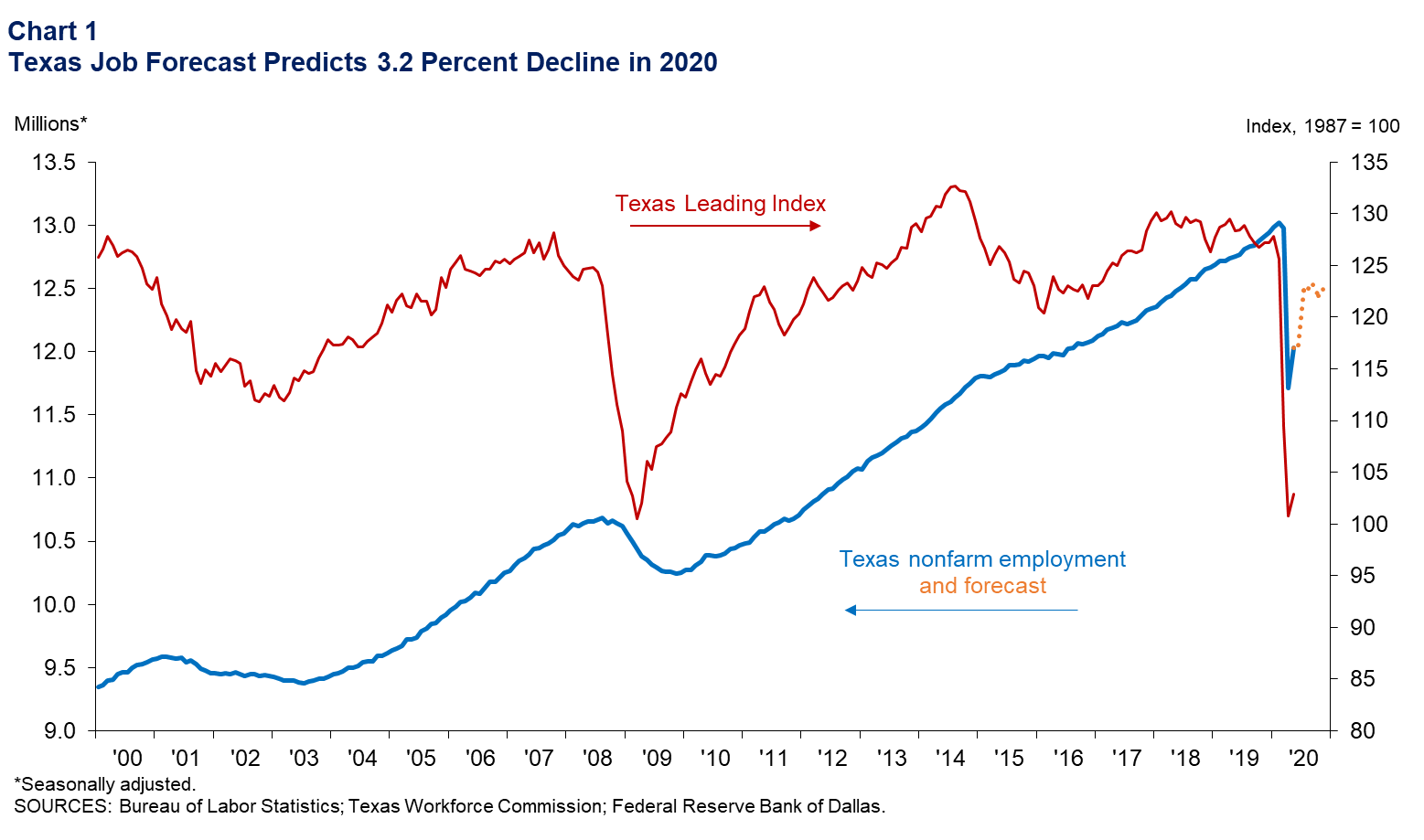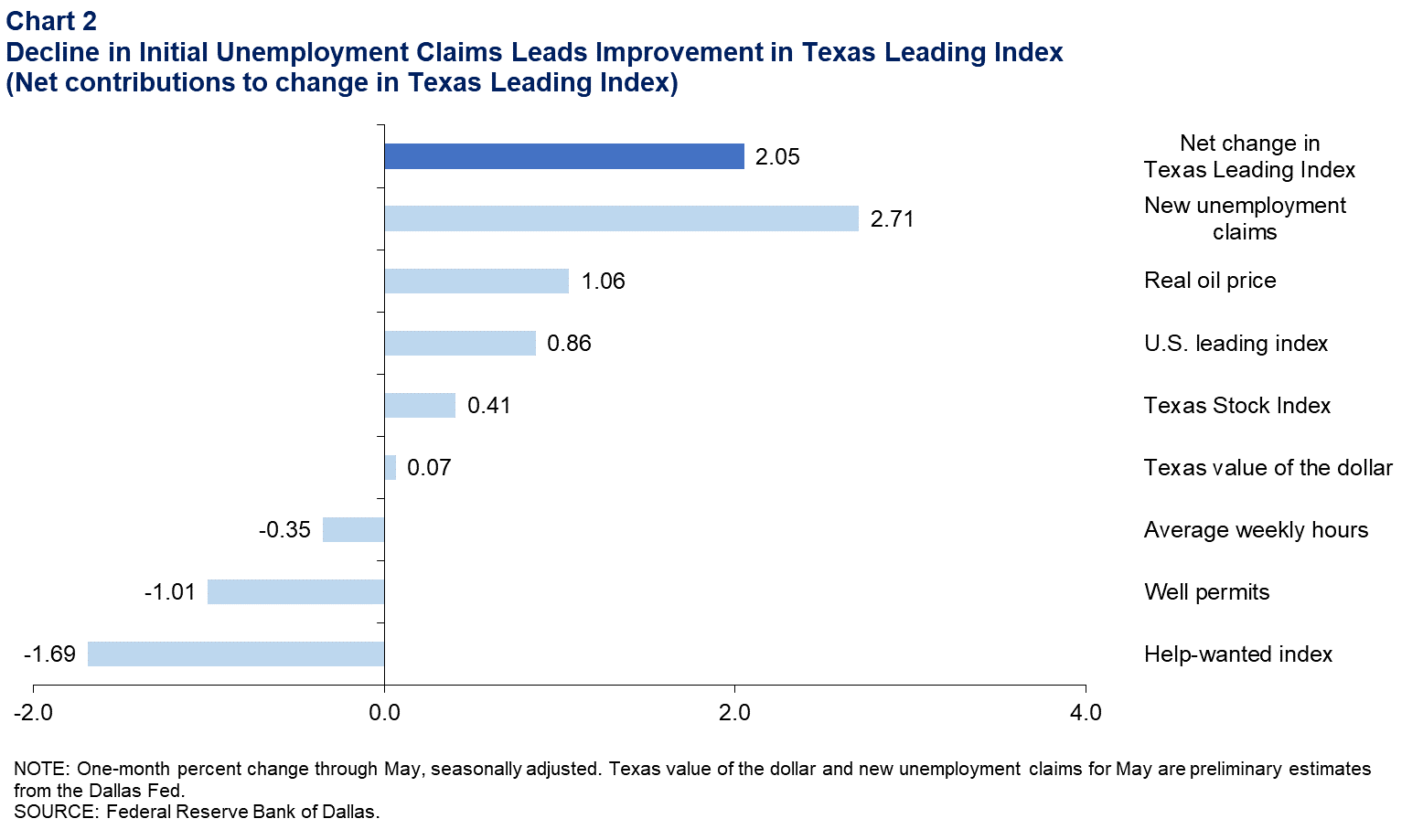Texas Employment Forecast

June 19, 2020
Texas jobs increased 37.9 percent (2.7 percent non-annualized) in May after falling a revised 70.8 percent in April. Employment is down 27.1 percent since February.
The Texas Leading Index increased moderately in May after sharp declines in March and April. Using our top-down model based on national forecasts, COVID-19 infection rates and oil futures prices, we estimate that Texas jobs will recover in the second half of the year but not enough to account for the sharp declines in March and April.
The Texas Employment Forecast suggests jobs will decline 3.2 percent this year (December/December). Based on the forecast, 408,000 jobs will be lost in the state this year, and employment in December 2020 will be 12.5 million (Chart 1). Forecast uncertainty remains elevated as daily infections in the state continue to rise, presenting significant downside risks to the outlook, while high levels of government payments to individuals and companies create upside risks.
“There was a broad-based rebound across industries in May,” said Keith R. Phillips, Dallas Fed assistant vice president and senior economist. “Jobs in high personal-contact industries, such as restaurants, hotels and personal services, rebounded but remained significantly below February levels. The oil and gas sector was an exception to the May improvement, with jobs declining 52.3 percent following a 65.7 percent decline in April. The jobs rebound was also broad-based across regions in the state.”
The Texas unemployment rate decreased from a revised 13.5 percent in April to 13.0 percent in May. After a sharp non-annualized decline of 7.5 percent in April, the labor force rebounded 4.1 percent in May.
The Texas Leading Index bounced back somewhat in May after historic declines in March and April (Chart 2). Although we typically look at the three-month change in the index, the sudden nature of the decline and recovery of jobs due to the pandemic suggests placing greater importance on the most recent monthly change. Five of the eight indicators provided positive contributions to the leading index in May. A sharp drop in initial claims for unemployment insurance and healthy increases in oil prices and the U.S. leading index led the gains in the components. A rise in stock prices of Texas-based companies and a slight decline in the Texas value of the dollar also pushed the index higher. Partially offsetting these gains were declines in help-wanted advertising, permits to drill new oil and gas wells and average weekly hours worked in manufacturing.


Next release: July 17, 2020
Methodology
The Dallas Fed Texas Employment Forecast projects job growth for the calendar year and is estimated as the 12-month change in payroll employment from December to December.
Due to the rapid onset of the COVID-19 pandemic, the forecasting model used in this release of the Dallas Fed Texas Employment Forecast differs from the model used historically. In this case, payroll employment for June to December, is estimated based on expectations for U.S. GDP growth for the remainder of 2020, an estimate of direct COVID-19 impacts in March, April, and July, and expected prices of West Texas Intermediate crude oil based on the futures curve.
For details regarding the forecasting model currently in use, please contact Keith Phillips at keith.r.phillips@dal.frb.org or Christopher Slijk at christopher.slijk@dal.frb.org.
Contact Information
For more information about the Texas Employment Forecast, contact Keith Phillips at keith.r.phillips@dal.frb.org or Christopher Slijk at christopher.slijk@dal.frb.org.